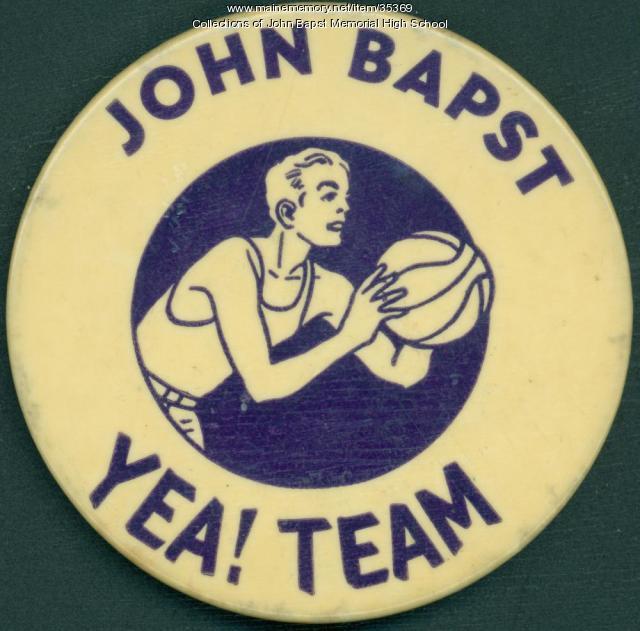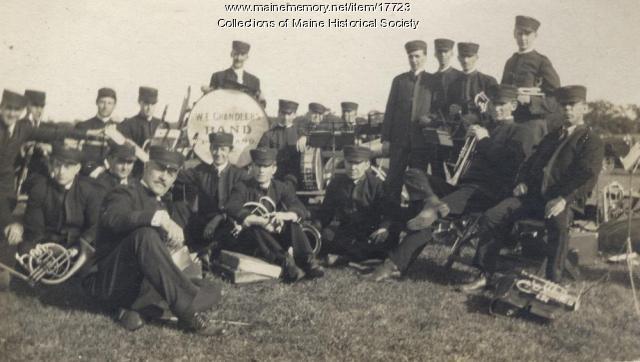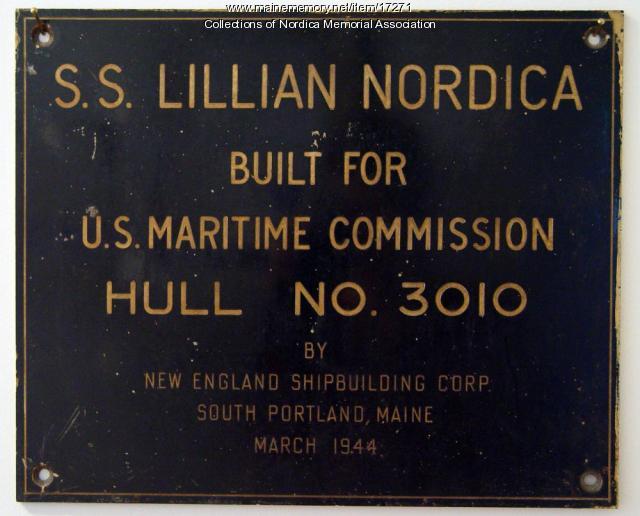Keywords: Historical
- Historical Items (19785)
- Tax Records (6)
- Architecture & Landscape (1861)
- Online Exhibits (296)
- Site Pages (1376)
- My Maine Stories (39)
- Lesson Plans (42)
Online Exhibits
Your results include these online exhibits. You also can view all of the site's exhibits, view a timeline of selected events in Maine History, and learn how to create your own exhibit. See featured exhibits or create your own exhibit
Exhibit
In Maine, like many other states, a newly formed Ku Klux Klan organization began recruiting members in the years just before the United States entered World War I. A message of patriotism and cautions about immigrants and non-Protestants drew many thousands of members into the secret organization in the early 1920s. By the end of the decade, the group was largely gone from Maine.
Exhibit
J.A. Poor and the Portland-Montreal Connection
John A. Poor's determination in 1845 to bring rail service to Maine and to make Portland the winter port for Montreal, along with the steel foundry he started to build locomotives and many other products, helped boost the economy of Portland the state.
Exhibit
Student Exhibit: Can You Help Our Free Skowhegan Public Library?
The Skowhegan Free Public Library was built in 1889 with money donated by Abner Coburn and the town of Skowhegan. Mr. Coburn left $30,000 in his will towards the building of the library. In 2005, for the library to fully keep up with their programs need to make some renovations. These changes would allow for more use of technology, more room for children's programs, and provide handicap accessibility.
Exhibit
Unlocking the Declaration's Secrets
Fewer than 30 copies of the first printing of the Declaration of Independence are known to exist. John Dunlap hurriedly printed copies for distribution to assemblies, conventions, committees and military officers. Authenticating authenticity of the document requires examination of numerous details of the broadside.
Exhibit
John Bapst High School was dedicated in September 1928 to meet the expanding needs of Roman Catholic education in the Bangor area. The co-educational school operated until 1980, when the diocese closed it due to decreasing enrollment. Since then, it has been a private school known as John Bapst Memorial High School.
Exhibit
Educating Oneself: Carnegie Libraries
Industrialist Andrew Carnegie gave grants for 20 libraries in Maine between 1897 and 1912, specifying that the town own the land, set aside funds for maintenance, have room to expand -- and offer library services at no charge.
Exhibit
Informal family photos often include family pets -- but formal, studio portraits and paintings also often feature one person and one pet, in formal attire and pose.
Exhibit
Longfellow: The Man Who Invented America
Henry Wadsworth Longfellow was a man and a poet of New England conscience. He was influenced by his ancestry and his Portland boyhood home and experience.
Exhibit
Before the era of recorded music and radio, nearly every community had a band that played at parades and other civic events. Fire departments had bands, military units had bands, theaters had bands. Band music was everywhere.
Exhibit
"Twenty Nationalities, But All Americans"
Concern about immigrants and their loyalty in the post World War I era led to programs to "Americanize" them -- an effort to help them learn English and otherwise adjust to life in the United States. Clara Soule ran one such program for the Portland Public Schools, hoping it would help the immigrants be accepted.
Exhibit
Maine Sweets: Confections and Confectioners
From chocolate to taffy, Mainers are inventive with our sweet treats. In addition to feeding our sweet tooth, it's also an economic driver for the state.
Exhibit
The Swinging Bridge: Walking Across the Androscoggin
Built in 1892 to entice workers at the Cabot Manufacturing Corporation in Brunswick to move to newly built housing in Topsham, the Androscoggin Pedestrian "Swinging" Bridge or Le Petit Pont quickly became important to many people traveling between the two communities.
Exhibit
Success at riding a bike mirrored success in life. Bicycling could bring families together. Bicycling was good for one's health. Bicycling was fun. Bicycles could go fast. Such were some of the arguments made to induce many thousands of people around Maine and the nation to take up the new pastime at the end of the nineteenth century.
Exhibit
LeBaron Atherton's furniture empire consisted of ten stores, four of which were in Maine. The photos are reminiscent of a different era in retailing.
Exhibit
Workers in Maine have labored in factories, on farms, in the woods, on the water, among other locales. Many of Maine's occupations have been determined by the state's climate and geographical features.
Exhibit
Henry Wadsworth Longfellow's popularity in the 19th century is reflected by the number of images of him -- in a variety of media -- that were produced and reproduced, some to go with published works of his, but many to be sold to the public on cards and postcards.
Exhibit
Remembering Mellie Dunham: Snowshoe Maker and Fiddler
Alanson Mellen "Mellie" Dunham and his wife Emma "Gram" Dunham were well-known musicians throughout Maine and the nation in the early decades of the 20th century. Mellie Dunham also received fame as a snowshoe maker.
Exhibit
Published women authors with ties to Maine are too numerous to count. They have made their marks in all types of literature.
Exhibit
When Europeans arrived in North America and disrupted traditional Native American patterns of life, they also offered other opportunities: trade goods for furs. The fur trade had mixed results for the Wabanaki.
Exhibit
Memorializing Civil War Veterans: Portland & Westbrook
Three cemeteries -- all of which were in Westbrook during the Civil War -- contain headstones of Civil War soldiers. The inscriptions and embellishments on the stones offer insight into sentiments of the eras when the soldiers died.
Exhibit
Father Rasles, the Indians and the English
Father Sebastien Rasle, a French Jesuit, ran a mission for Indians at Norridgewock and, many English settlers believed, encouraged Indian resistance to English settlement. He was killed in a raid on the mission in 1724 that resulted in the remaining Indians fleeing for Canada.
Exhibit
Land Claims, Economic Opportunities?
The landmark 1980 Maine Indian Land Claims Settlement Act provided $81.6 million to Maine Indians for economic development, land purchase and other purposes. The money and increased land holdings, however, have not solved economic and employment issues for Maine Indians.
Exhibit
In Canada During the Civil War
One surviving letter from the family of Francis Pratt to the young man who was in Canada in 1865 suggests that going to Canada to escape military service during the Civil War was not unheard of. The letter also suggests money was removed to Canada to protect it.
Exhibit
South Portland's Wartime Shipbuilding
Two shipyards in South Portland, built quickly in 1941 to construct cargo ships for the British and Americans, produced nearly 270 ships in two and a half years. Many of those vessels bore the names of notable Mainers.
























